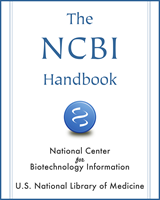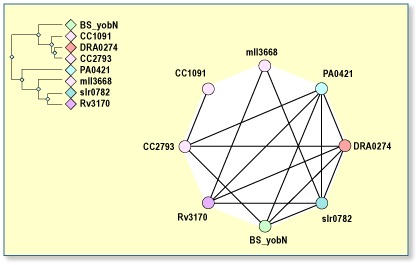
NCBI Bookshelf. A service of the National Library of Medicine, National Institutes of Health.

The COG for monoamine oxidase currently contains eight proteins from seven different organisms: one each from Deinococcus radiodurans (DRA0274), Mycobacterium tuberculosis (Rv3170), Bacillus subtilis (BS_yobN), Synechocystis (slr0782), Pseudomonas aeruginosa (PA0421), and Mesorhizobium loti (mll3668), and two paralogs from Caulobacter crescentus (CC2793 and CC1091). This is the only COG in the COGs database that has this phylogenetic pattern. In humans, monoamine oxidase is an enzyme of the mitochondrial outer membrane that seems to be involved in the metabolism of antibiotics and neurologically active agents and is a target for one class of antidepressant drugs.

NCBI Bookshelf. A service of the National Library of Medicine, National Institutes of Health.